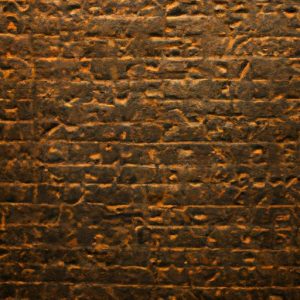Introduction to Handwriting Analysis
Have you ever wondered what your handwriting says about you? handwriting analysis, also known as graphology, is a captivating field that delves into the depths of our personalities, revealing hidden insights through the strokes of a pen. In this article, we will embark on a journey to uncover the secrets behind this ancient art and explore how it has evolved over time.
Definition and Significance of Handwriting Analysis
Handwriting analysis is an intriguing practice that involves examining the physical characteristics of a person’s handwriting to gain a deeper understanding of their personality traits, emotions, and even potential talents. Each stroke, curve, and slant holds a story waiting to be unraveled. By analyzing the size, pressure, spacing, and slant, graphologists can unveil a wealth of information about an individual, offering valuable insights that can be applied in various aspects of life.
Brief History and Development of Handwriting Analysis as a Field
The roots of handwriting analysis can be traced back to ancient civilizations, where it was believed that handwriting reflected one’s character and destiny. However, it wasn’t until the 19th century that it began to gain recognition as a scientific discipline. Pioneers such as Jean-Hippolyte Michon and Camillo Baldi dedicated their lives to the study of graphology, laying the foundation for its modern-day practice.
Over the years, handwriting analysis has evolved, incorporating psychological theories and statistical analysis to enhance its accuracy and credibility. Today, it is utilized in various fields, including forensic investigations, recruitment, and personal development, making it a valuable tool for understanding ourselves and others on a deeper level.
Now that we have set the stage, let’s delve into the science behind handwriting analysis and uncover the techniques and tools that graphologists employ to decipher the hidden messages within our writing.
The Science Behind Handwriting Analysis
Handwriting analysis is not just a whimsical art; it is deeply rooted in science and psychology. Each stroke of the pen has the potential to unveil a wealth of information about our personality traits and characteristics. Let’s explore the fascinating connection between handwriting and our inner selves.
How Handwriting Reflects Personality Traits and Characteristics
Did you know that the size of your handwriting can reveal insights about your confidence level? Larger handwriting often indicates an outgoing and extroverted personality, whereas smaller handwriting suggests introversion and attention to detail. The slant of your writing can also provide valuable clues. A right slant may indicate a warm and expressive nature, while a left slant might suggest reserved and introspective tendencies.
Furthermore, the pressure applied to the page can shed light on our emotional state. Heavy pressure often signifies intensity and passion, while lighter pressure may indicate a more laid-back and easygoing demeanor. Additionally, the spacing between letters and words can reveal our organizational skills and attention to detail.
The Connection Between Brain and Handwriting
Our handwriting is not just a mere representation of our personality; it is intricately linked to the complex workings of our brain. The act of writing engages various cognitive processes, including motor skills, memory, and emotions.
Studies have shown that specific areas of the brain are activated when we write, reflecting our individuality and thought patterns. The intricate coordination between our brain and hand movements is what gives rise to the unique characteristics present in our handwriting.
Moreover, researchers have discovered that there is a reciprocal relationship between handwriting and cognitive processes. By actively engaging in handwriting, we can enhance our memory, creativity, and critical thinking skills. It’s a remarkable symbiotic connection between our mind and the written word.
Now that we have explored the scientific underpinnings of handwriting analysis, let’s delve into the techniques and tools that graphologists employ to decipher the hidden messages within our writing.
Techniques and Tools Used in Handwriting Analysis
Understanding the techniques and tools utilized in handwriting analysis is essential to unraveling the intricate details within each stroke. Let’s explore some commonly used techniques and the tools that graphologists rely on to decode the secrets hidden within our handwriting.
Overview of Commonly Used Techniques to Analyze Handwriting
-
Graphoanalysis: This technique focuses on analyzing specific traits within handwriting, such as the size of letters, pressure applied, and the slant. By examining these characteristics, graphoanalysts can interpret various personality traits, such as assertiveness, emotional stability, and creativity.
-
Trait Stroke Analysis: This technique examines specific strokes within handwriting to determine personality traits. For example, the size and shape of loops, angles, and connections between letters can provide valuable insights into an individual’s level of confidence, attention to detail, and adaptability.
-
Symbolism Analysis: Symbolism analysis involves the interpretation of symbols, doodles, and drawings that often appear alongside handwriting. These symbols can reflect an individual’s subconscious thoughts, desires, or fears, providing deeper insights into their personality and emotions.
Introduction to Various Tools and Instruments Used in Handwriting Analysis
-
Magnifying Glass: A magnifying glass is an essential tool for examining intricate details within handwriting. It allows graphologists to observe minute characteristics, such as pen pressure variations and tiny strokes, which can offer valuable clues about a person’s personality.
-
Microscope: In some cases, a microscope may be used to analyze handwriting samples with utmost precision. This advanced tool can reveal even the tiniest nuances and irregularities, aiding graphologists in their analysis.
-
Computer Software: With advancements in technology, computer software has become an invaluable tool in handwriting analysis. These programs can analyze and compare large amounts of handwriting samples, providing statistical data and comprehensive reports to support the graphologist’s findings.
By employing these techniques and tools, graphologists are able to unlock the hidden messages within handwriting, helping us gain a deeper understanding of ourselves and others. Now, let’s move on to the basics of handwriting analysis and explore the key factors that play a crucial role in deciphering its meaning.
Understanding the Basics of Handwriting Analysis
When it comes to handwriting analysis, there are key factors and elements that graphologists meticulously examine to unravel the hidden messages within the written word. By understanding these basics, we can start deciphering the nuances of our own or others’ handwriting.
Examination of Key Factors in Handwriting Analysis
-
Slant: The slant of handwriting refers to the angle at which the letters lean. A right slant indicates an emotional and outgoing personality, while a left slant suggests introversion and a more reserved nature. Vertical slants signify a logical and practical mindset.
-
Size: The size of handwriting can provide insights into a person’s attention to detail and self-expression. Large handwriting suggests an extroverted and outgoing individual, while small handwriting is often associated with introversion and a meticulous nature.
Interpretation of Handwriting Elements
-
Pressure: The pressure applied while writing can unveil the emotional intensity of the writer. Heavy pressure indicates strong emotional energy, determination, and sometimes even stress. On the other hand, light pressure suggests a more delicate and sensitive disposition.
-
Spacing: The spacing between words and letters can reveal the writer’s need for personal space and their ability to connect with others. Wide spacing may indicate a desire for independence and freedom, while narrow spacing suggests a preference for closeness and a sociable nature.
By carefully analyzing these factors and elements, graphologists can begin to build a comprehensive profile of an individual’s personality, shedding light on their strengths, weaknesses, and even potential career paths. However, it’s important to remember that handwriting analysis is not a definitive science and should be used as a tool for self-reflection and personal growth rather than making absolute judgments.
Now that we have explored the basics of handwriting analysis, let’s move on to discovering the various applications of this intriguing field in our daily lives.
Applications of Handwriting Analysis
Handwriting analysis, with its ability to unveil the intricacies of human behavior, finds practical applications in various fields. Let’s explore how this fascinating discipline is employed in different contexts and uncover some compelling examples of its utilization.
Practical Uses of Handwriting Analysis in Different Fields
Forensic Investigations
Handwriting analysis plays a vital role in forensic investigations, enabling experts to determine the authenticity of documents, identify potential forgeries, and even provide insights into the psychological state of the writer. By carefully examining the unique characteristics of a handwritten note, investigators can gather valuable evidence and make informed conclusions, aiding in solving crimes and legal disputes.
Recruitment
When it comes to recruitment, employers and hiring managers can leverage handwriting analysis to gain deeper insights into candidates beyond what a traditional resume or interview may reveal. By analyzing handwriting samples, employers can assess an individual’s attention to detail, level of organization, and even their emotional stability. This information can help make more informed decisions when selecting the right candidate for a job role, contributing to a more successful and harmonious work environment.
Personal Development
Handwriting analysis is not only limited to professional settings but also holds immense value in personal development. By understanding the patterns and characteristics of our own handwriting, we can gain valuable insights into our strengths, weaknesses, and areas for personal growth. This self-awareness can empower us to make positive changes, enhance our communication skills, and foster personal growth.
Examples of Handwriting Analysis in Action
Let’s explore a few compelling examples that highlight the practical applications of handwriting analysis:
Case Study: Forensic Handwriting Analysis
In a high-profile criminal investigation, a handwritten note was found at the crime scene. By analyzing the handwriting, experts were able to link the note to a suspect, providing crucial evidence that played a pivotal role in solving the case.
Recruitment Assessment
A company seeking to hire a customer service representative analyzed the handwriting samples of potential candidates. By identifying candidates with clear and legible handwriting, they were able to select individuals who demonstrated strong attention to detail, a crucial quality for the role.
Personal Development Journey
Through the analysis of her own handwriting, an individual discovered a tendency to rush and neglect proper spacing. Armed with this knowledge, she made a conscious effort to slow down and pay attention to her writing, resulting in improved organization and clarity in her thoughts.
As we can see, handwriting analysis has practical applications that extend beyond mere curiosity. Its utilization in forensic investigations, recruitment processes, and personal development showcases the profound impact it can have in various aspects of our lives. Now, let’s proceed to the final section where we explore ways to enhance our handwriting analysis skills.
Conclusion
In conclusion, handwriting analysis is a fascinating field that allows us to delve into the depths of human personality and gain valuable insights into ourselves and others. Through the examination of strokes, slants, and sizes, we can uncover hidden emotions, potential talents, and even identify signs of deception or authenticity.
Throughout history, handwriting analysis has evolved from a mystical art to a scientific discipline, incorporating psychological theories and statistical analysis to enhance its accuracy and applicability. Its applications are vast, ranging from forensic investigations to career counseling, and even personal development.
By understanding the basics of handwriting analysis and utilizing the techniques and tools available, we can tap into the power of this unique skill. Whether you are a recruiter seeking to find the perfect candidate or an individual striving for self-improvement, handwriting analysis provides a valuable lens through which we can better comprehend ourselves and the world around us.
So, grab a pen and paper, and start exploring the hidden messages within your handwriting. What secrets will your strokes reveal? The journey awaits, and the power to decode the enigma lies in your hands.
Remember, handwriting is more than just ink on paper; it is a reflection of who we are. Unlock the secrets, embrace the intricacies, and let the strokes guide you on a path of self-discovery.
Discover the power of handwriting analysis today and embark on a journey to unravel the mysteries within your own handwriting.





